Since December, RMBO and partners have been using radio-telemetry to study winter survival and habitat use of sparrows wintering in the grasslands of northern Mexico.
Two weeks ago at our Chihuahua site, we set out to recapture birds and replace transmitters deployed on sparrows in December. Thanks to unseasonably warm and wind-free days, we were able to recapture all 28 surviving Grasshopper Sparrows, band more than 100 new Grasshopper Sparrows and deploy a total of 50 new transmitters.
Despite our success in capturing Grasshopper Sparrows, Baird’s Sparrows have been unusually absent this winter. Although no data is sometimes informative data, it is nonetheless disconcerting that we’ve only captured two Baird’s Sparrows and observed very few on our weekly bird transects. Fortunately, at our study site in Durango, Mexico, 23 of the 30 birds being tracked by our partners with the Universidad Juárez del Estado de Durango are Baird’s Sparrows.
Mortality rates are in striking contrast to last season. So far, four of our birds have been predated by Loggerhead Shrikes. By this time last season, we had already documented 28 mortalities! This outstanding difference in survivorship reveals that there is much to be learned about the secret life of sparrows.
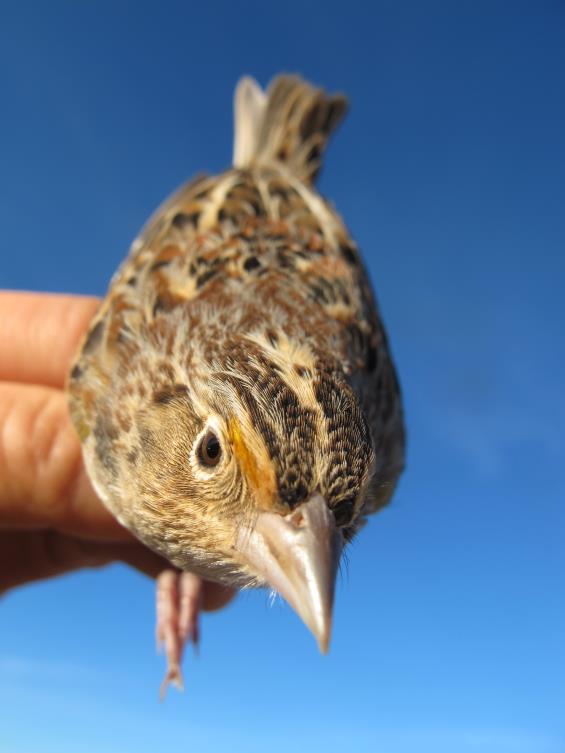
Little brown bird? To the contrary; close inspection reveals the Grasshopper Sparrows’ intricate network of rufous, beige, gray and ochre feathers. These markings allow them to blend into the grassland, providing protection from predators such as Loggerhead Shrikes, Merlins and Northern Harriers. Unfortunately, camouflage doesn’t help this species evade wintering habitat loss. Photo by Erin Strasser.

RMBO biologists and technicians and volunteer students from Universidad Autónoma de Chihuahua set up a line of mist nets to recapture Grasshopper Sparrows wearing radio-transmitters. The dedicated team chased sparrows up and down steep rocky hillsides and through patches of spiny mesquite, celebrating with every capture. Photo by Greg Levandoski.
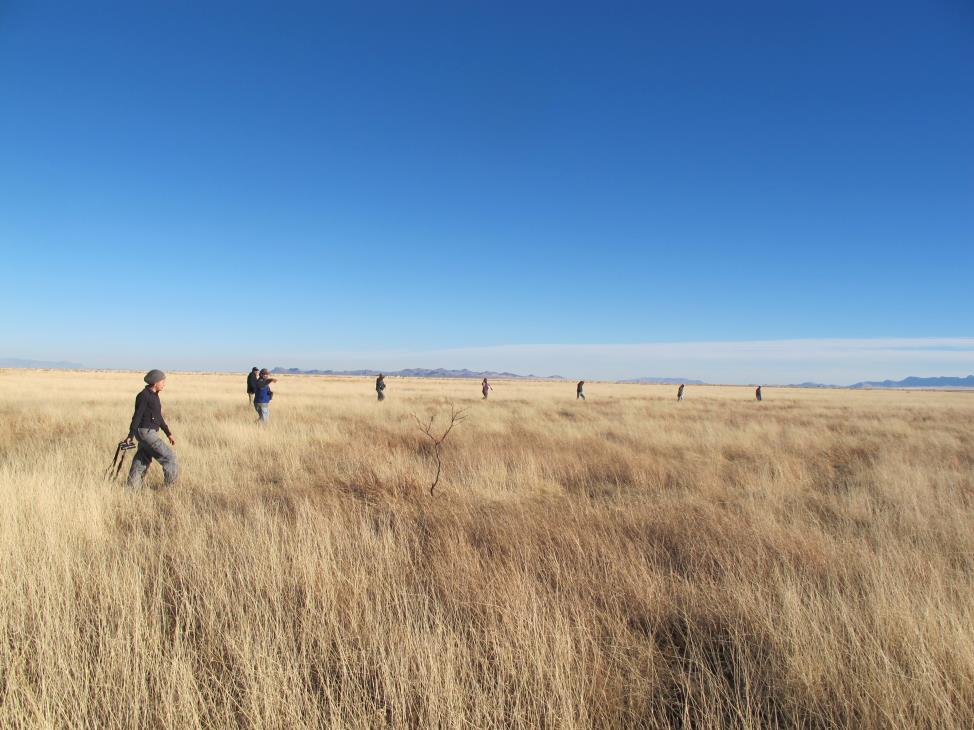
During the sparrow rodeo, the team attempts to flush sparrows from a dense swath of grass into the awaiting nets. Photo by Erin Strasser.
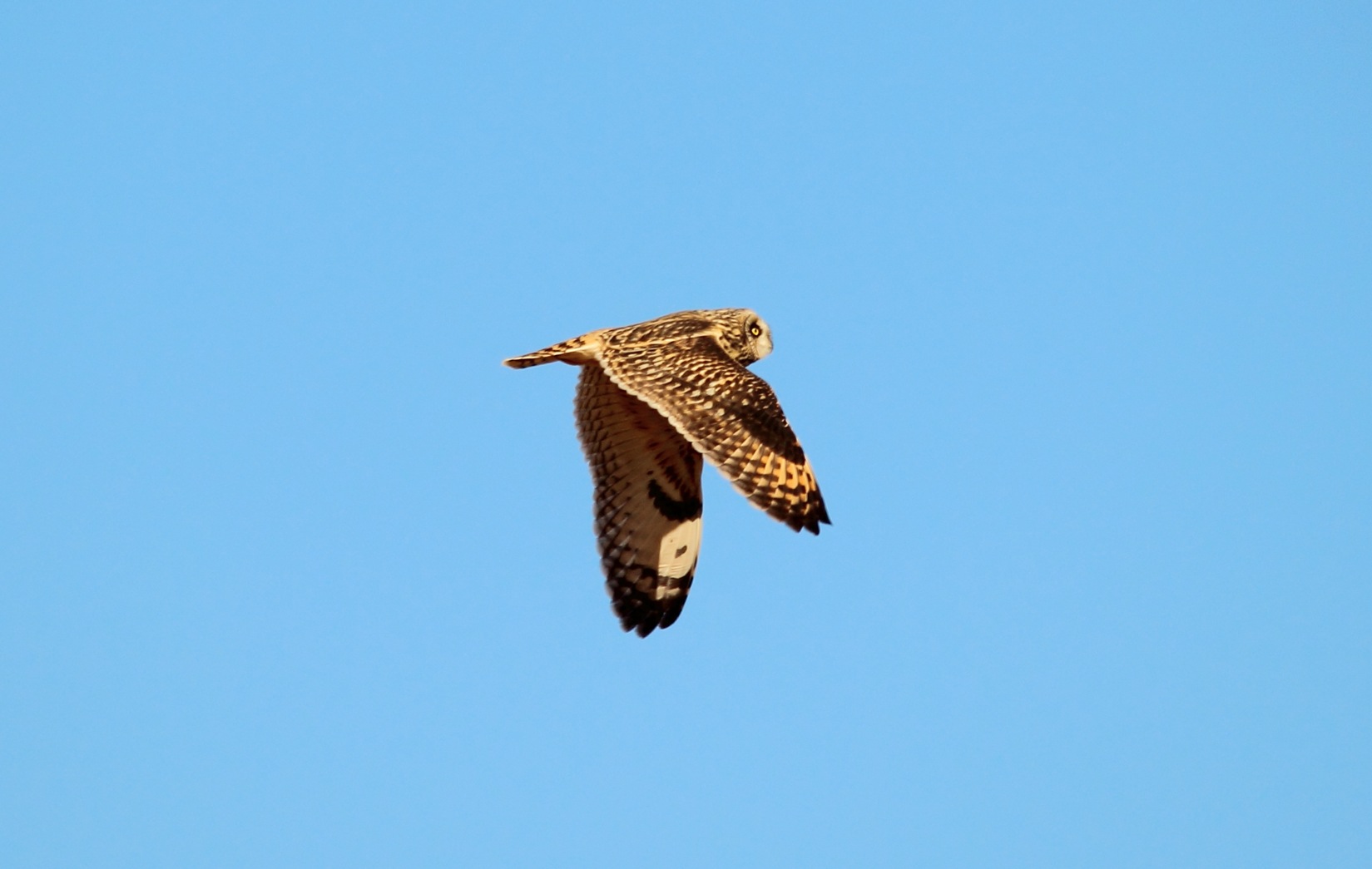
A Short-eared Owl is flushed from its day roost in the grassland. Last year, we made the surprising discovery of two transmitters in one owl pellet! Photo by José Hugo Martínez Guerrero.
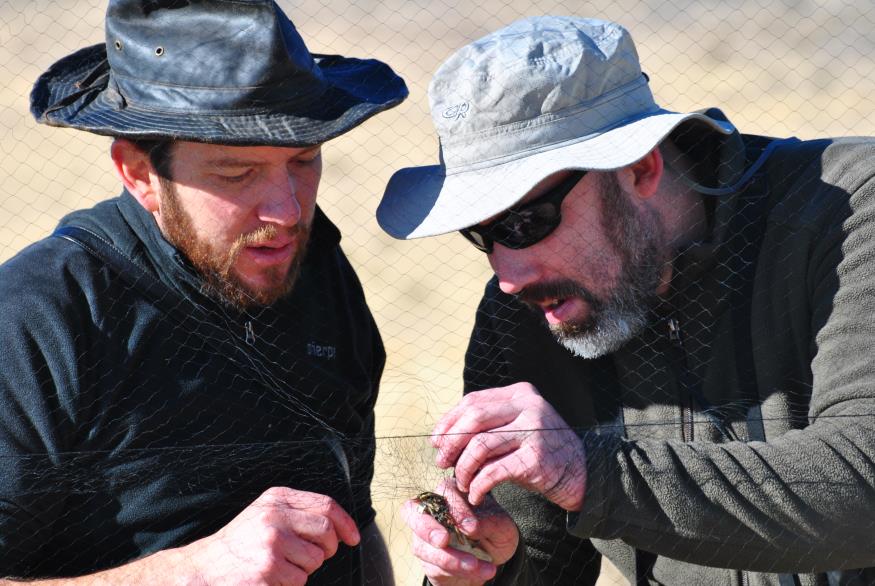
RMBO biologist Greg Levandoski instructs Bo Crees how to safely remove a Savannah Sparrow from a mist net. This year, the study site is teeming with wintering Savannah Sparrows, but Baird’s Sparrows have been curiously absent. Photo by Denis Perez.
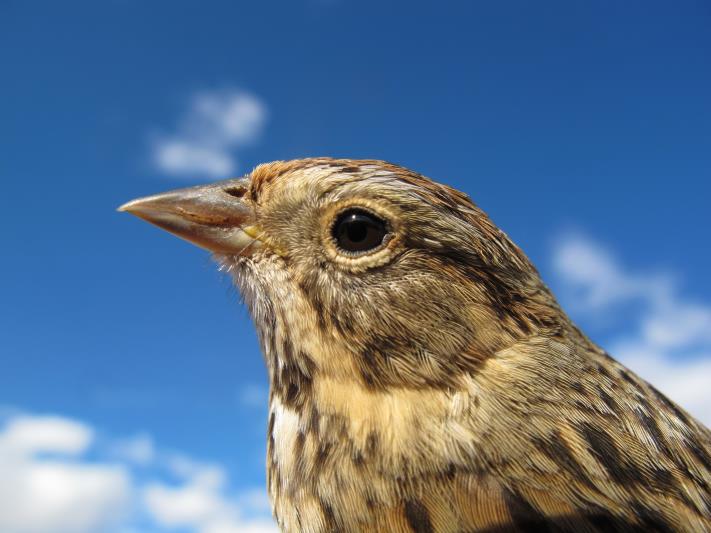
Lincoln’s Sparrow was one of the many sparrow species captured during the late January banding session in Chihuahua, Mexico. Photo by Erin Strasser.
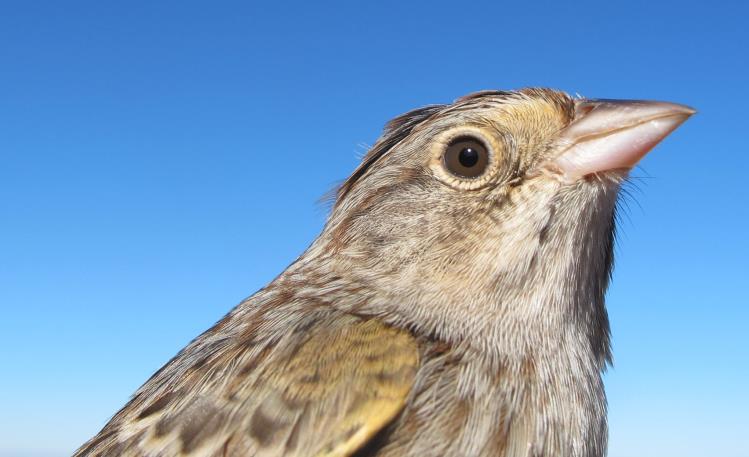
Cassin’s Sparrow was one of the many sparrow species captured during the late January banding session in Chihuahua, Mexico. Photo by Erin Strasser.

Placing a transmitter on a Grasshopper Sparrow involves concentration and dexterity. The transmitter, attached to an elastic harness and worn like a backpack, must fit just right or it could fall off too early. Photo by Denis Perez.
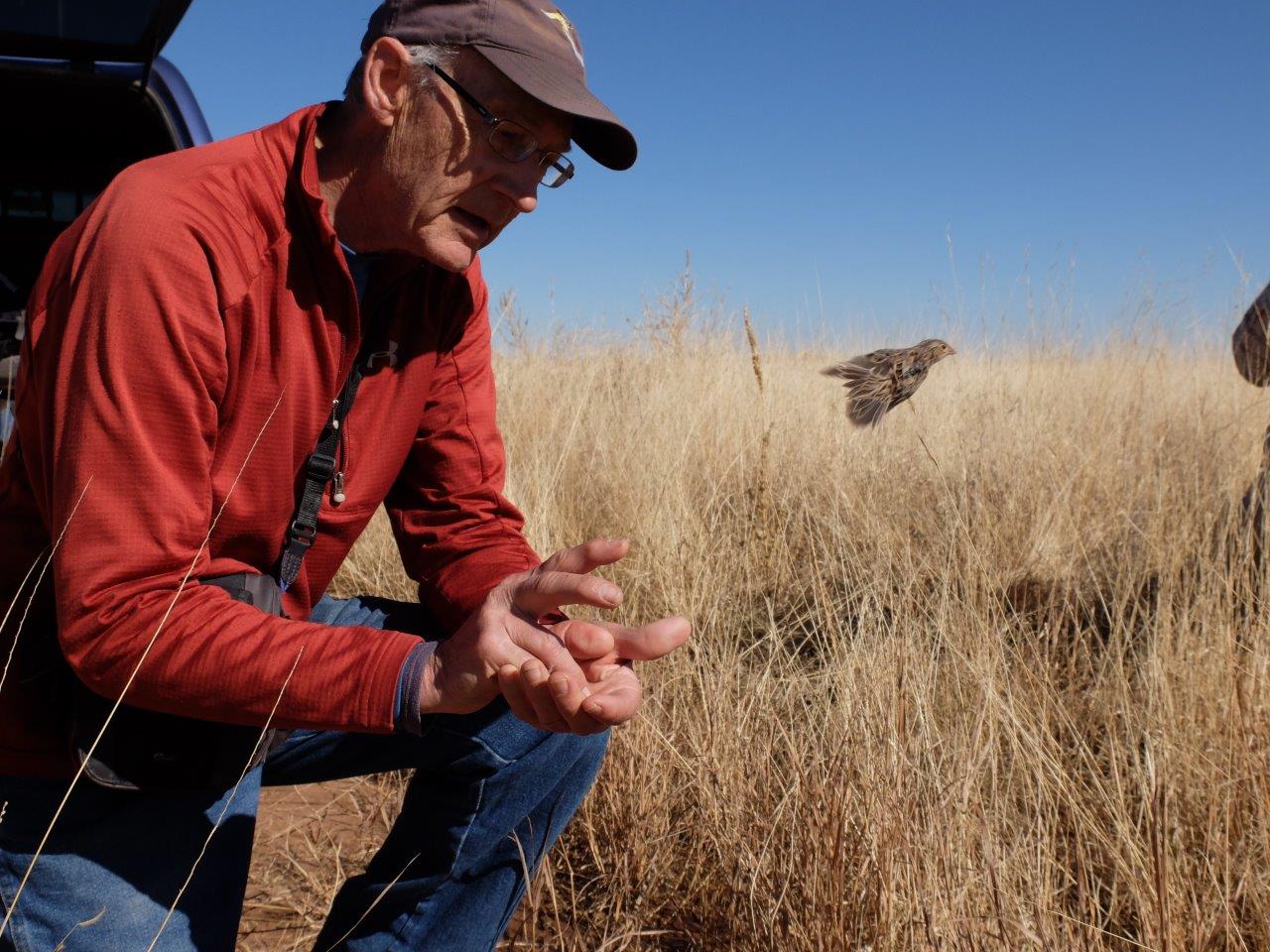
Two of RMBO’s Friends, Paul Slingsby and Kevin Corwin, joined us in Mexico for a field trip auctioned off at the BBQ for the Birds in October. Here, a Grasshopper Sparrow rockets out of Paul’s hands. Photo by Greg Levandoski.

The moon hovers over the Chihuahuan Desert, a rapidly declining and critical ecosystem for overwintering grassland birds. Results from this study will inform grassland management practices to promote higher quality habitat for birds and the humans that rely on it. Photo by Denis Perez.
Interested in learning more? Read more about this research.
Stay tuned to the RMBO blog for our end-of-season wrap-up post in March, which will elucidate these mysteries and summarize our findings.
~ Erin Strasser, Biologist


